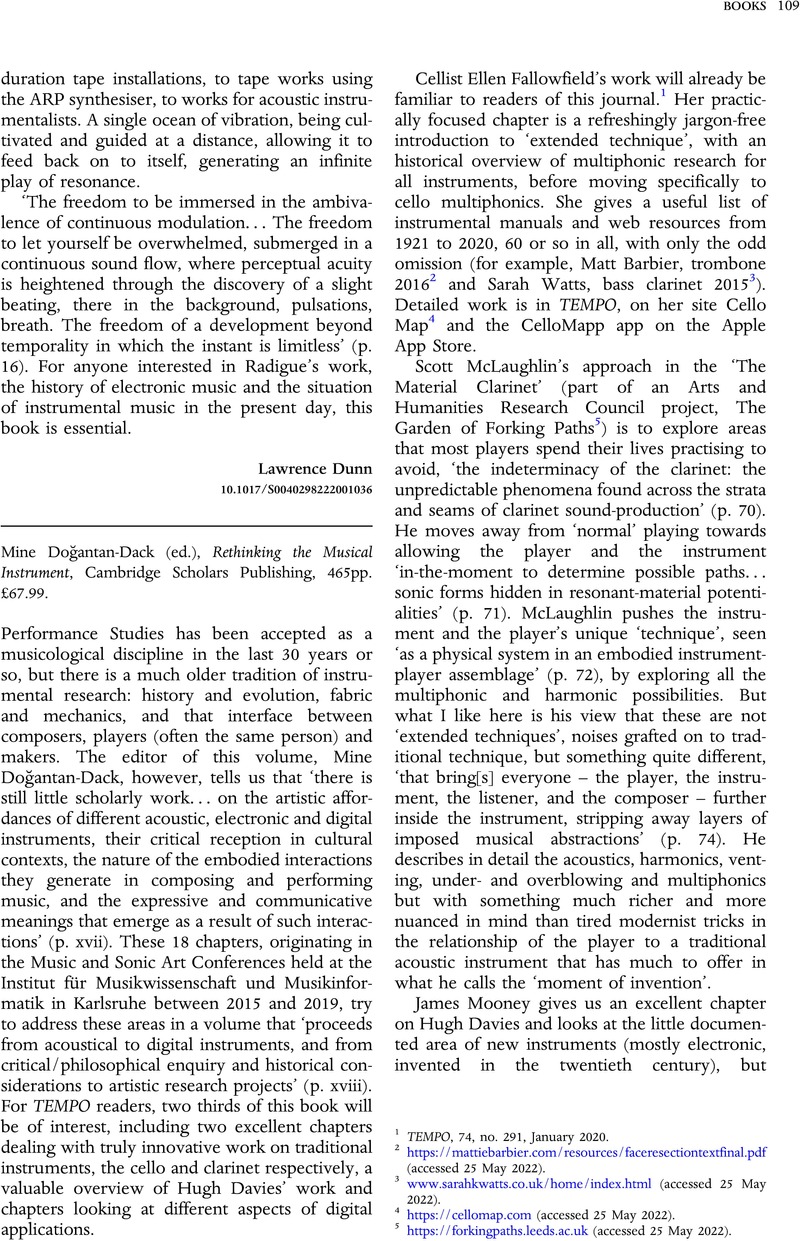No CrossRef data available.
Published online by Cambridge University Press: 11 January 2023

1 TEMPO, 74, no. 291, January 2020.
2 https://mattiebarbier.com/resources/faceresectiontextfinal.pdf (accessed 25 May 2022).
3 www.sarahkwatts.co.uk/home/index.html (accessed 25 May 2022).
4 https://cellomap.com (accessed 25 May 2022).
5 https://forkingpaths.leeds.ac.uk (accessed 25 May 2022).
6 www.leuphana.de/en/portals/midakuk.html (accessed 25 May 2022).